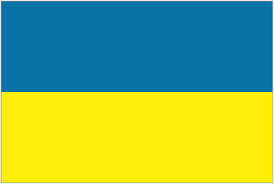 KASHA
KASHA"Eat breakfast yourself, share lunch with a friend, give dinner to your enemy."
-Russian/Ukrainian proverb
As I've gotten older and explored other cultures I've found myself more curious about my own cultural heritage. Like many Canadians, I have roots in several different countries and we've explored some of their breakfasts already (the Full English and Danish Ollebrod). Today, we're going to look at Kasha, a buckwheat porridge, and see if it ignites my Ukrainian spirit.
Kasha is an ancient breakfast that is enjoyed in many ways across Eastern Europe. It can refer to various grains (wheat, oats, barley, millet, or rye) but for our purposes let's look at buckwheat groats.
Buckwheat groats (which are actually a seed) are astonishingly good for you. A quick google search shows sites claiming that buckwheat groats are high in amino acids, protein, vitamins and fiber. They're also touted as a strong preventative measure for a number of ailments including cardiovascular disease and are friendly to those suffering from Ceiliac disease. You could almost say buckwheat is the new quinoa...
But how to prepare it for breakfast. Simple really. You boil the Kasha with water or milk (about 1:2 ratio) on the stove top until the Kasha has reached the desired consistency. Similar to Oatmeal, everybody has their preferences - some like it soupy and mushy, others prefer it crumbly and a bit drier. Once it's done you can top it with various toppings. We went with butter and honey and just a touch of cinnamon.
At first bite Kasha was delicious. The texture was really the starring feature. It was a little toothsome but also crumbly. The flavour was nutty and smoky, owing to the fact the groats are roasted, and something about it really evoked a Eastern European atmosphere.
However, I found an entire bowl of Kasha to be overwhelming. Perhaps due to the high fiber content, it sat in my stomach like a bowl of lead. And sad to say, I didn't come close to finishing my bowl.
The Verdict:
For Ease of Preparation:
For Degree of Separation:
For Guestability:
For Sustainability:
If you have a long morning ahead, consider Kasha. We weren't hungry for a looooong time after just half a bowful!
For Costability:
If you can find an Eastern European market this stuff is cheap. For quite a large bag we paid only about $2.
For Overall Appeal:
I'll leave you today with some fun Kasha quotes I found:
"He has Kasha in his head." - He's a mess.
"Cabbage soup and Kasha are all we need to live on." - Shows the importance of Kasha to the Russian/Ukrainian diet.
"He ate too little Kasha." - He's weak.
And my favourite....
"You can't make Kasha with him." - He's useless.





